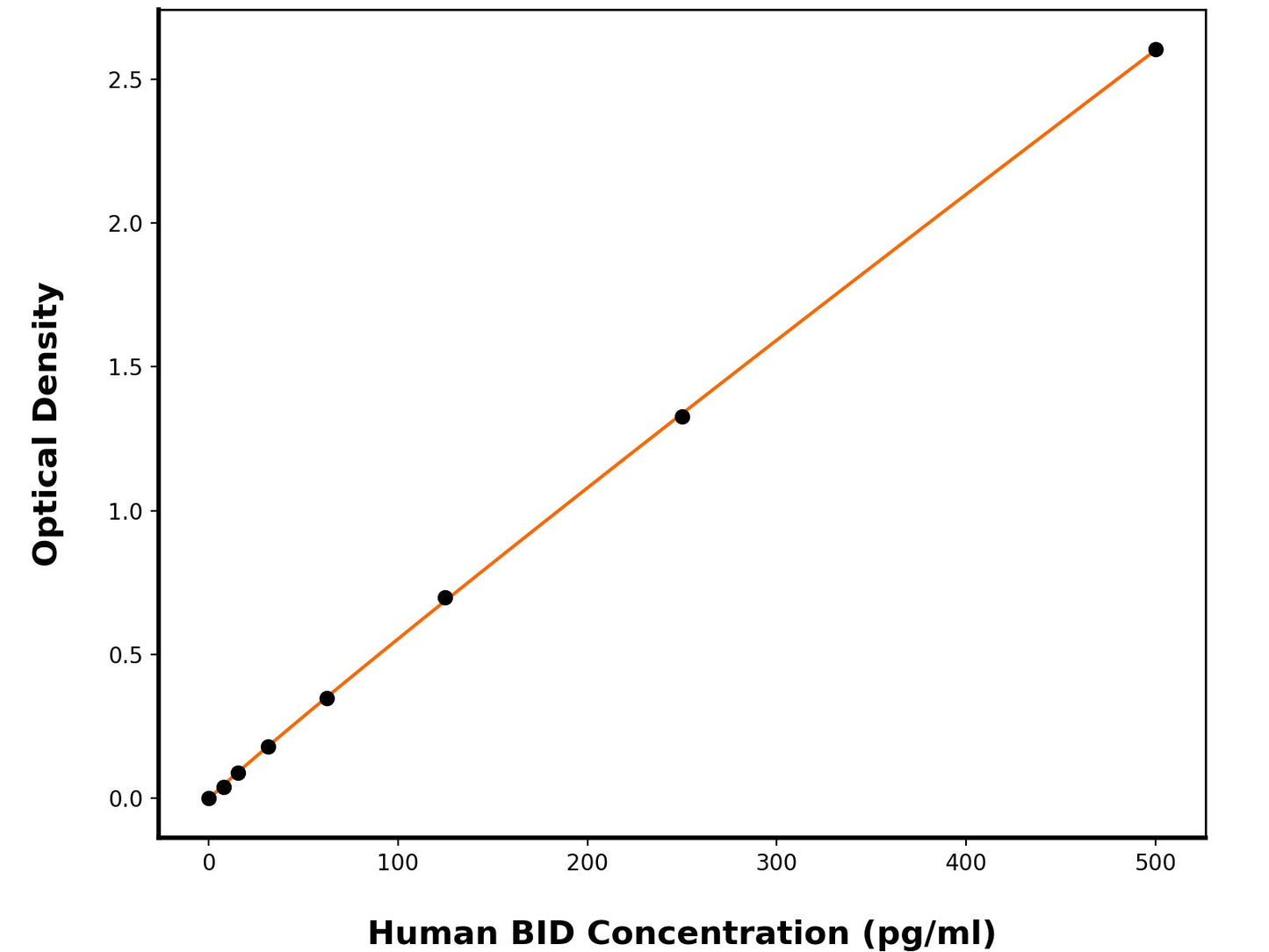1
/
of
1
Human Bh3-Interacting Domain Death Agonist (BID) ELISA Kit
Human Bh3-Interacting Domain Death Agonist (BID) ELISA Kit
This ELISA kit is designed to detect Human Bh3-Interacting Domain Death Agonist (Human BID). The assay plate has been pre-coated with mouse anti-Human BID monoclonal antibody. When the sample containing BID is added to the plate, it binds to the antibodies coated on the wells. Then, a horseradish peroxidase conjugated mouse anti-Human BID Antibody is added to the wells and binds to BID in the sample. After washing the wells, substrate solutions are added, and the color intensity is directly proportional to the amount of Human BID present. The reaction is stopped by adding an acidic stop solution, and the absorbance is measured at 450 nm.
Catalog No:
BPE091
Regular price
$754.00 USD
Regular price
$580.00 USD
Sale price
$754.00 USD
Unit price
/
per
2 weeks
Couldn't load pickup availability
Product Details
Species Reactivity
Human
Sensitivity
1.48 pg/mL
Detection Range
7.81-500 pg/mL
Sample Type
Serum, plasma, cell culture supernates
Incubation(s)
3.5 hour(s)
Research Areas
Cancer, Cell Biology, Metabolism
Background
The BH3 interacting domain death agonist (BID) is a pro-apoptotic member of the Bcl-2 protein family, which contains only the BH3 domain, and is required for its interaction with the Bcl-2 family proteins and for its pro-death activity. BID is important to cell death mediated by these proteases and thus is the sentinel to protease-mediated death signals. Recent studies further indicate that Bid may be more than just a killer molecule, it could be also involved in the maintenance of genomic stability by engaging at mitosis checkpoint. BID is an integrating key regulator of the intrinsic death pathway that amplifies caspase-dependent and caspase-independent execution of neuronal apoptosis. Therefore pharmacological inhibition of BID provides a promising therapeutic strategy in neurological diseases where programmed cell death is prominent. BID is activated by Caspase 8 in response to Fas/TNF-R1 death receptor activation. Activated BID is translocated to mitochondria and induces cytochrome c release, which in turn activates downstream caspases. BID action has been proposed to involve the mitochondrial re-location of its truncated form, tBid, to facilitate the release of apoptogenic proteins like cytochrome c.
Shipping Condition
Shipped on cold gel packs.
Storage Condition and Shelf Life
This product can be stored at 2-8C.
Analyte
BH3-interacting domain death agonist
Regulatory Status
For Research Use Only

